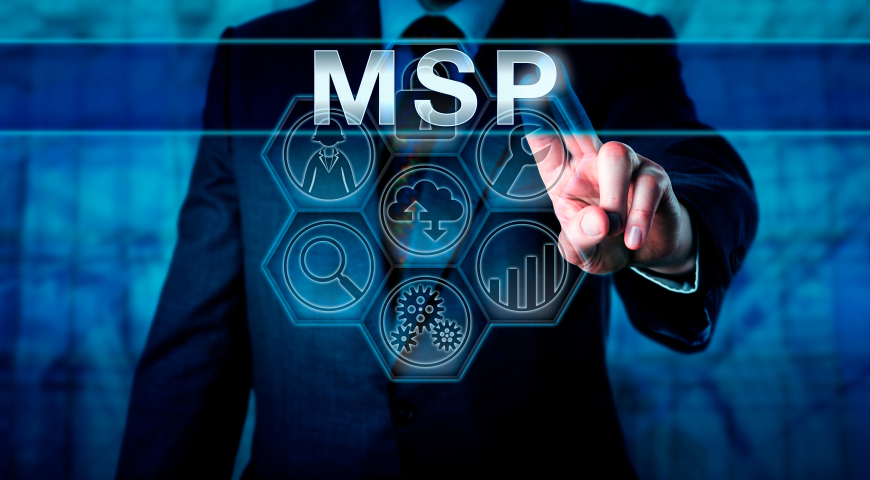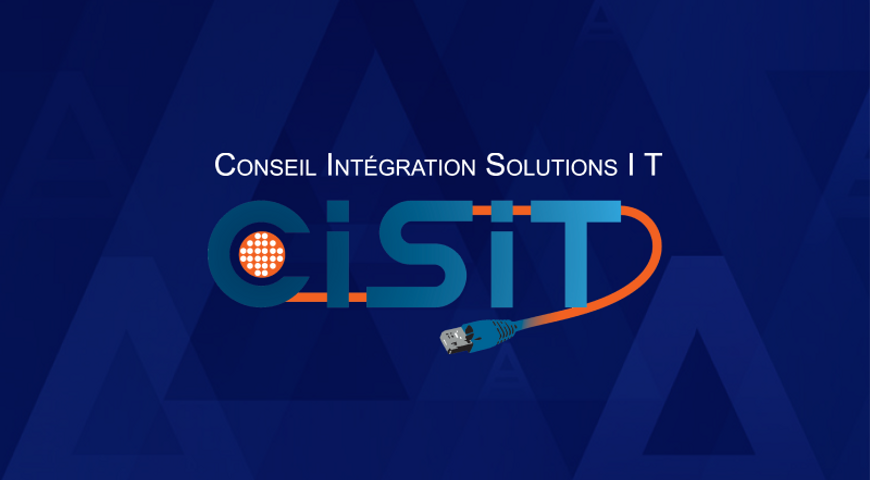
Welcome to the definitive resource for understanding data recovery software for managed service providers (MSPs). In today's digital age, where data is the lifeblood of businesses, selecting the right tool for every job is paramount. Our Ultimate ultimate Guide guide is designed to be your compass in this selection process, providing invaluable insights into the factors that define the best data recovery software.
What is data recovery?
Data recovery is the process of retrieving or restoring data that has been lost, corrupted, accidentally deleted or is otherwise inaccessible. This can happen due to various reasons such as hardware failures, software issues, human errors, malware attacks or natural disasters. The primary goal of data recovery is to recover as much of the lost or inaccessible data as possible, minimizing the impact of data loss on individuals or organizations.
Data recovery is crucial for individuals and businesses alike, as data often represents critical information, documents or files essential for day-to-day operations or personal use. Many organizations invest in robust data recovery solutions, and Managed Service Providers (MSPs) often play a vital role in helping businesses implement and execute effective data recovery strategies to ensure data integrity and business continuity.
Overview of the MECE framework for comprehensive analysis
The MECE (Mutually Exclusive, Collectively Exhaustive) framework is a structured approach to problem-solving and analysis, ensuring that the information is organized in a way that avoids overlap and omission. In the context of MSP data recovery, the MECE framework can be applied to comprehensively analyze and address various aspects of data recovery solutions.
Here is an overview of the categories and topics that MECE brings to the discussion:
Mutually exclusive categories
- Types of data loss scenarios
- Data recovery techniques.
Collectively exhaustive coverage
- Comprehensive solution categories.
- Security measures.
Problem solving and decision making
- Decision criteria.
- Root cause analysis.
Client segmentation
- Client categories.
- Tailored solutions.
Scalability and future-proofing
- Scalability categories.
- Future-proofing strategies.
By applying the MECE framework to MSP data recovery, the analysis is organized and ensures a comprehensive understanding of the various facets involved in choosing and implementing optimizing data recovery solutions.
What is MSP data recovery software?
Data recovery software are specialized tools designed to assist MSPs in recovering and restoring data for their clients. These software solutions are tailored to the needs of MSPs who often manage data and IT infrastructure for multiple clients or businesses. MSP data recovery software typically provides features that enable efficient and secure recovery of lost or corrupted data in various scenarios, ensuring minimal downtime and data loss.
What are the key features of an MSP data recovery solution?
Data recovery software tailored for managed service providers incorporates a comprehensive set of features to address the distinctive challenges associated with managing data recovery across diverse client environments.
One fundamental feature is multiclient support, which enables MSPs to efficiently oversee data recovery operations for multiple clients through a centralized interface. This capability is indispensable for MSPs dealing with varied client portfolios, ensuring streamlined and organized management of data recovery tasks.
Versatility in data recovery is another key aspect, encompassing the ability to recover data from a spectrum of storage media, including hard drives, solid-state drives (SSDs) and USB drives. This ensures that MSPs can effectively address different data loss scenarios that may arise in their clients' IT infrastructures. Scalability is a critical feature that allows the software to adapt to the growing needs and expanding data volumes of MSP clients. This is particularly important for MSPs experiencing client base expansion and evolving IT environments.
No MSP data recovery software would be complete without security measures, incorporating robust features to protect recovered data and ensure compliance with data privacy regulations. This is essential for safeguarding sensitive client information throughout the data recovery process.
Remote management capabilities enable MSPs to perform data recovery tasks from a distance, facilitating quick response and issue resolution without the need for physical presence. This is particularly advantageous for MSPs managing clients with geographically dispersed IT infrastructures.
The best data recovery solutions incorporate automation features to streamline and expedite the data recovery process. This not only reduces the need for manual intervention but also minimizes errors, enhancing overall efficiency in handling data recovery tasks. Backup integration is another critical feature, allowing seamless recovery from backup archives and ensuring a comprehensive approach to data recovery by leveraging existing backup systems and minimizing downtime.
Moreover, reporting and monitoring tools are provided so MSPs can generate reports, monitor data recovery processes and gain insights into the overall health of the data recovery system. This functionality allows MSPs to keep track of data recovery activities, assess performance and effectively communicate the value of their services to clients.
Common feature breakdown
Advanced data recovery capabilities
- Types of data loss scenarios: Covers the range of situations causing data loss, including accidental deletion, hardware failures and cyber-attacks, showcasing the software's adaptability to diverse scenarios.
- Techniques for data restoration: Explores the methodologies employed by the software for retrieving and restoring data, highlighting advanced techniques to ensure effective recovery.
Scalability and performance
- Assessing software scalability: Examines the software's ability to scale with increasing data volumes and growing user needs, ensuring its effectiveness in handling larger and more complex data recovery tasks.
- Performance metrics to consider: Outlines key metrics such as speed, efficiency and resource utilization, offering insights into the software's overall performance in data recovery operations.
Security and compliance standards
- Encryption and data protection: Focuses on security features, particularly encryption methods and data protection mechanisms, ensuring the safeguarding of recovered data.
- Compliance with global standards: Emphasizes the software's adherence to international data protection and privacy standards, demonstrating its alignment with legal and regulatory requirements.
Choosing the best data recovery tool for your MSP
Choosing the best data recovery solution for your MSP business involves a systematic process to ensure it aligns with your specific needs and requirements. Here's a step-by-step guide to selecting the right MSP data recovery tool:
- Assess your requirements: Conduct a thorough assessment of your MSP's data recovery needs. Understand the types of data your clients handle, potential risks and the criticality of quick recovery in various scenarios.
- Define compatibility: Ensure the data recovery solution is compatible with the diverse IT environments and systems you manage for your clients. Compatibility is crucial for seamless integration and effective recovery across different platforms.
- Evaluate advanced capabilities: Examine the advanced data recovery capabilities of the solution. Look for features that address a wide range of data loss scenarios, including accidental deletion, hardware failures and cyber-attacks. Verify the techniques used for data restoration.
- Consider scalability: Assess the scalability of the solution. Verify its ability to handle increasing data volumes and growing client needs. A scalable solution ensures that it remains effective as your MSP portfolio expands.
- Review performance metrics: Examine performance metrics associated with the data recovery solution. Consider factors like speed, efficiency and resource utilization. A high-performing solution ensures swift and reliable data recovery.
- Prioritize security measures: Prioritize security features, including encryption and data protection mechanisms. Security is paramount, especially when dealing with sensitive client information. Ensure the solution aligns with industry standards for data security.
- Check compliance standards: Verify that the data recovery solution complies with global standards and regulations. This includes adherence to data protection and privacy laws, ensuring that your MSP operates within legal boundaries.
- Evaluate ease of use: Consider the user-friendliness of the solution. An intuitive interface and easy-to-use features will help you recover data efficiently. Training requirements for your team should also be taken into account.
- Assess integration with backup systems: Check if the solution integrates seamlessly with existing backup systems. This ensures a comprehensive approach to data recovery, allowing enabling you to leverage backup archives for efficient recovery.
- Review vendor reputation and support: Research the reputation of the solution's vendor. Look for customer reviews, testimonials and case studies. Assess the level of customer support and the vendor's track record in providing timely assistance.
- Consider cost- effectiveness: Evaluate the cost-effectiveness of the data recovery solution. Consider the total cost of ownership, including licensing, maintenance and potential costs associated with data loss incidents.
- Trial period and testing: Whenever possible, opt for a trial period to test the solution in a real-world environment. This allows you to assess its performance, compatibility and ease of use before making a final decision.
By following these steps, you can systematically evaluate and choose the best data recovery solution for your MSP, ensuring that it meets the specific needs of your business and clients while providing robust and reliable data recovery capabilities.
Future data recovery trends in the IT channel
As technology continues to evolve, data recovery trends in the IT channel are expected to follow suit, adapting to emerging challenges and opportunities. Several key trends are likely to shape the future of data recovery in the managed services world:
Increased emphasis on cybersecurity and ransomware protection
With the rising threat of cyberattacks and ransomware, data recovery solutions will focus on not only recovering lost data but also preventing and mitigating security breaches. Integration with robust cybersecurity measures will be crucial in safeguarding data.
Artificial intelligence (AI) and machine learning (ML) integration
AI and ML technologies are likely to play a significant role in enhancing data recovery capabilities. These technologies can optimize the identification of patterns, automate recovery processes and improve the accuracy and speed of data restoration.
Cloud-based data recovery services
The adoption of cloud-based data recovery services is expected to increase. Cloud solutions offer scalability, accessibility and cost effectiveness. MSPs may leverage cloud platforms for storing backups and executing recovery processes seamlessly.
Endpoint protection and remote recovery
As remote work becomes more prevalent, data recovery solutions will focus on endpoint protection. This includes ensuring the recovery of data from devices used by remote workers. Remote recovery capabilities will be essential for managing dispersed work environments.
Ransomware incident response planning
Data recovery strategies will not only involve restoring data after a ransomware attack but also include comprehensive incident response planning. MSPs will play a critical role in helping clients develop and implement effective response plans.
Blockchain for data integrity
Blockchain technology may be incorporated into data recovery solutions to enhance data integrity and security. The decentralized and tamper-proof nature of blockchain can be leveraged to verify the authenticity of recovered data.
Edge computing data recovery solutions
With the proliferation of edge computing, data recovery solutions will need to adapt to recovering and protecting data at the edge. This involves addressing challenges associated with decentralized data storage and processing.
Data recovery as a service (DRaaS)
The growth of data recovery as a service is anticipated, providing a subscription-based model for organizations to access robust data recovery solutions without the need for heavy upfront investments. This model aligns with the trend of IT services moving towards an "as-a-service" paradigm.
Automation for efficient recovery processes
Automation will become more prevalent in data recovery processes. Automated workflows, intelligent recovery algorithms and self-healing systems will contribute to faster and more efficient data recovery operations.
Enhanced data analytics for proactive recovery
Predictive analytics and proactive monitoring will become integral to data recovery solutions. By analyzing patterns and potential risks, these solutions can anticipate and address issues before they result in data loss, contributing to a proactive approach to recovery.
Regulatory compliance integration
Data recovery solutions will increasingly integrate features to ensure compliance with evolving data protection and privacy regulations. This includes functionalities that facilitate adherence to global standards and requirements.
As the IT landscape evolves, MSPs and IT professionals will need to stay abreast of these trends, adapting their data recovery strategies to meet the challenges of an increasingly complex and dynamic digital environment.
Cost efficiency and ROI
Pricing models for MSP data recovery software
Subscription Advantages
- Cost spreading: Subscription models often involve lower initial costs, allowing MSPs to spread expenses over time. This can be advantageous for businesses with budget constraints.
- Continuous updates: Subscribers typically receive continuous updates, ensuring that the software stays current with the latest features and security patches. This helps in maintaining optimal performance and staying ahead of potential threats.
- Predictable expenses: Monthly or annual subscription fees provide predictability in budgeting, making it easier for MSPs to manage their financial commitments.
- Scalability: Subscription models often offer scalability, allowing MSPs to adjust the number of licenses based on their evolving needs and the growth of their client base.
Subscription Disadvantages
- Long-term costs: Over an extended period, the cumulative subscription costs may surpass the one-time purchase price. This can be a disadvantage for businesses with a stable and predictable user base.
- Dependency: MSPs become dependent on continuous subscription payments. If financial constraints arise, maintaining subscriptions may become challenging, potentially leading to service interruptions.
One-time purchase
One - Time Advantages
- Upfront cost savings: One-time purchases involve a higher initial cost but can lead to savings over the long term, especially for established MSPs with a steady client base.
- Ownership: Once purchased, the software is owned outright. This provides financial flexibility and ensures that the software can be used without ongoing subscription fees.
- Flexible financial structure: For businesses with the financial capacity, a one-time purchase allows for flexibility in structuring expenses, potentially freeing up resources for other investments.
One - Time Disadvantages
- Limited updates and support: One-time purchases may not include continuous updates and support. This can lead to using outdated software, potentially exposing IT providers to security risks and missing out on new features.
- Higher initial investment: The initial cost of purchasing the software outright is typically higher than the initial payment for a subscription. This upfront investment can be a challenge for smaller MSPs or those on tight budgets.
- Scaling challenges: If the managed IT provider experiences sudden growth, adding new licenses may involve additional one-time purchase costs. This lack of scalability can be a drawback in dynamic business environments.
Pricing model considerations for MSPs
- Business model and growth plans: MSPs should consider their current business model and growth projections. Subscription models may suit businesses with dynamic or uncertain growth, while one-time purchases may be more suitable for stable, established MSPs.
- Budget constraints: Evaluate current budget constraints and long-term financial goals. A subscription model may provide more flexibility for businesses with limited upfront capital, while a one-time purchase might be feasible for those with available funds.
- Client needs: Consider the needs and preferences of clients. Some clients may prefer the predictability of subscription pricing, while others may appreciate the stability and ownership associated with a one-time purchase.
Cost-benefit analysis
Perform a comprehensive cost-benefit analysis to understand the total cost of ownership. Factor in not only the upfront costs but also ongoing expenses, such as maintenance, support and any additional features that may incur extra charges. Compare these costs against the benefits and capabilities offered by the software.
Cost efficiency recommendations
- Align pricing with MSP scale: Choose a pricing model that aligns with the scale of your MSP operation. Subscription models can provide flexibility for growing businesses, while one-time purchases may be more suitable for smaller operations.
- Consider additional costs: Factor in any additional costs, such as training expenses for your team to use the software effectively. Ensure that the overall investment is justified by the value and capabilities offered by the data recovery solution.
Return on investment
Measuring software impact
Assess how the data recovery software contributes to the overall efficiency and productivity of your IT business. Consider factors such as the time saved in recovery processes, the reduction in downtime and the ease of management. Evaluate how the software aligns with your business objectives.
Long-term benefits
Look beyond immediate gains and consider the long-term benefits of the data recovery solution. This includes its scalability to accommodate your MSP's growth, adaptability to evolving technologies and its ability to enhance client satisfaction. Long-term benefits contribute significantly to the overall ROI.
ROI Recommendations
- Evaluate time savings: Measure the software's impact on the time required for data recovery processes. Faster recovery times contribute directly to reduced downtime for your clients, positively affecting overall efficiency.
- Assess client satisfaction: Consider how the software enhances client satisfaction. A reliable and efficient data recovery solution can be a significant selling point for your MSP services, contributing to client retention and attracting new business.
- Future-proofing: Choose a data recovery solution that not only meets current needs but also provides features and scalability to accommodate future growth. This ensures a sustained positive impact on your MSP's operations.
Summing it up
The task of selecting the best MSP data recovery software should include thorough examination of the above factors to ensure it aligns seamlessly with the unique needs of your managed services provider business. Throughout this guide, we have laid out the intricacies of advanced data recovery capabilities, scalability and performance, as well as the critical aspects of security and compliance standards. Understanding pricing models and assessing return on investment (ROI) have been underscored as pivotal steps in making an informed decision.
Whether opting for a subscription model or a one-time purchase, the choice boils down to the unique requirements, financial considerations and growth trajectories of your MSP. Each model carries its advantages and disadvantages, and the final decision should align with your business strategy and client expectations.
In the dynamic realm of managed services, where data integrity is paramount, the chosen data recovery solution plays a crucial role in ensuring business continuity and client satisfaction. By carefully considering factors such as compatibility, scalability, security and cost efficiency, MSPs can navigate the complexities of data recovery with confidence, positioning themselves as reliable guardians of their clients' valuable information.
About Acronis
A Swiss company founded in Singapore in 2003, Acronis has 15 offices worldwide and employees in 50+ countries. Acronis Cyber Protect Cloud is available in 26 languages in 150 countries and is used by over 21,000 service providers to protect over 750,000 businesses.




